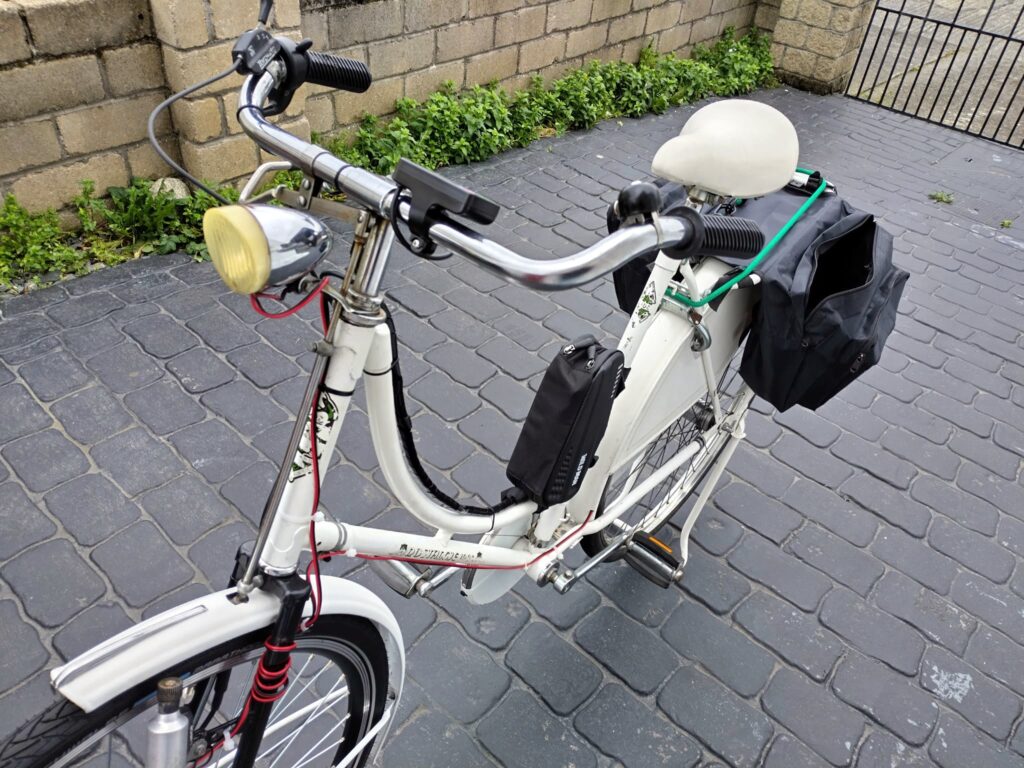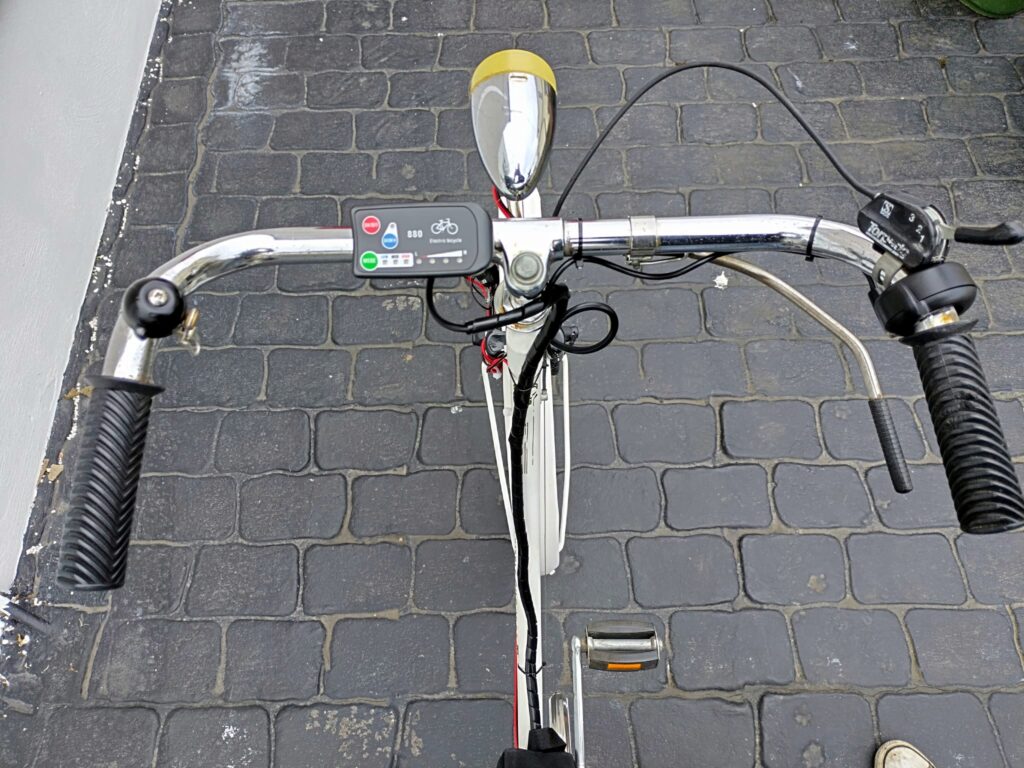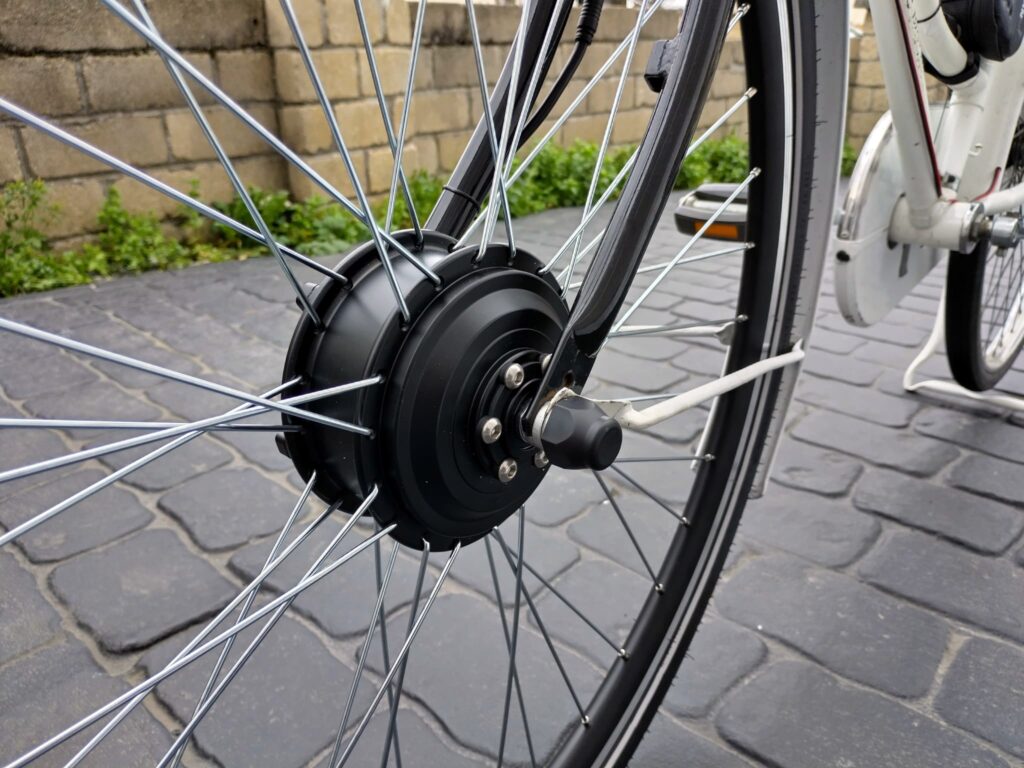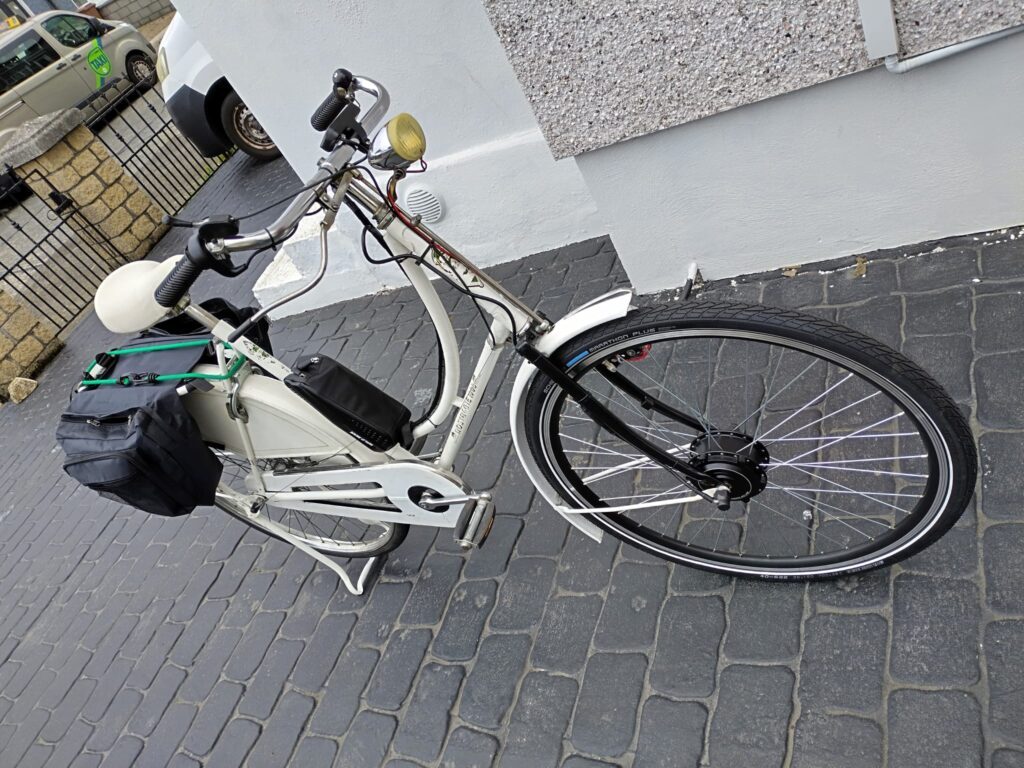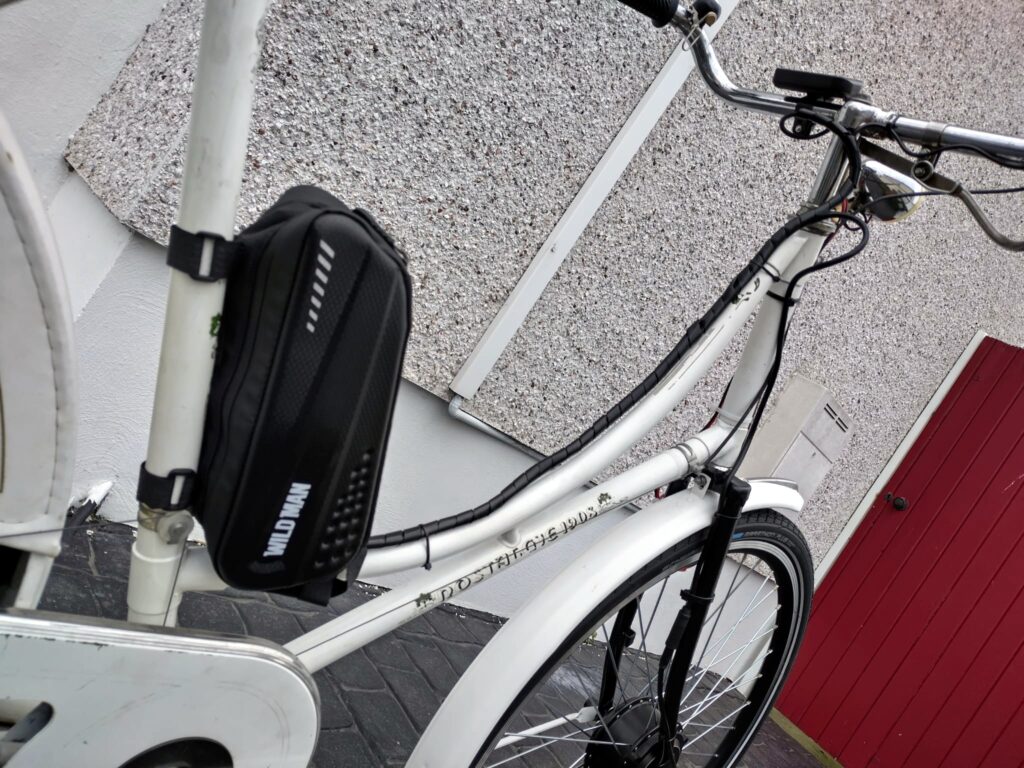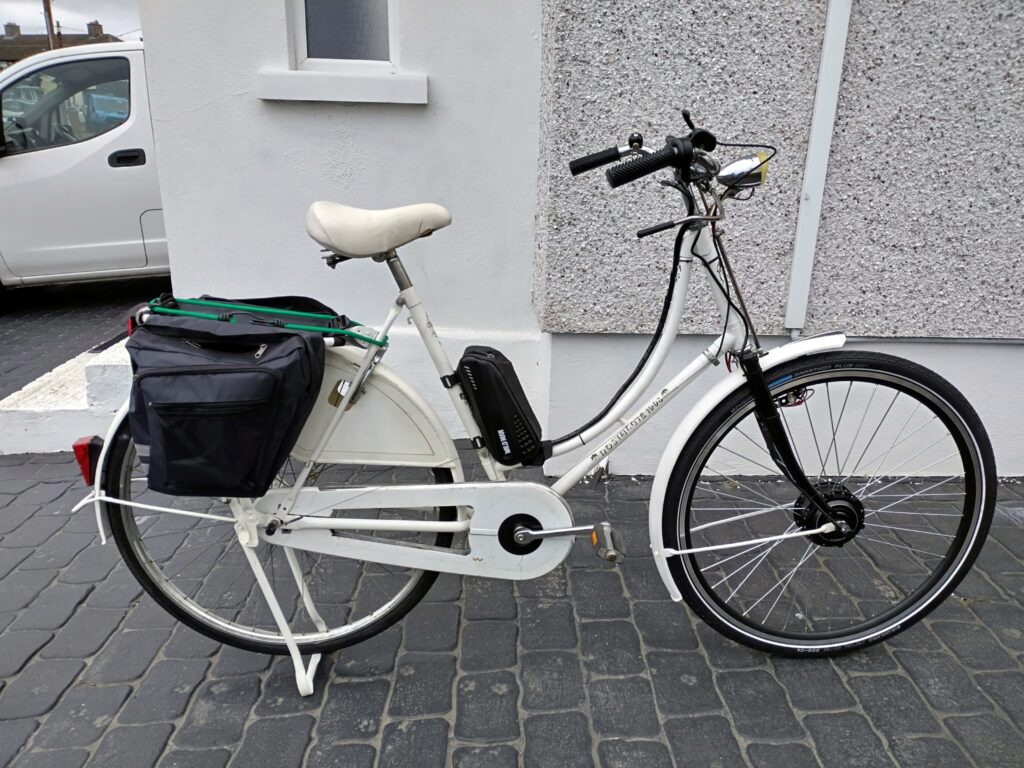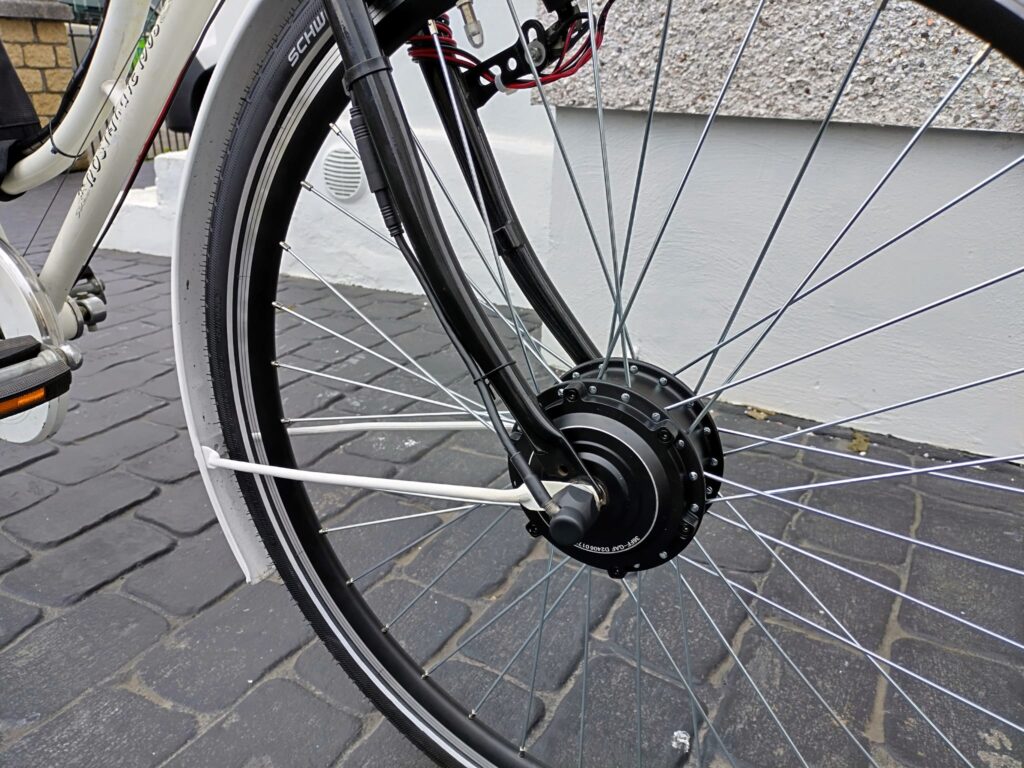The old Dutch bike, the “gold standard” of practicality and utility. It is unstoppable. Problem is, sometimes it feels a bit unstartable. Load it up and go into a headwind, and you feel like you are climbing Alpe d’Huez. Come to a busy junction and have to stop and restart, and you suddenly realize how cumbersome it is at slow speed.
I can’t think of a better platform for an e-bike conversion, and fortunately now with the huge rise in popularity of Aliexpress, getting a kit has never been easier or less expensive.
Unfortunately, getting stuff from Aliexpress can be a gamble. Sometimes the quality might not be exactly what you expect; but for this project, “inexpensive” is the main focus, and I’m pretty good at making stuff work no matter how crap it is.
The kit I ordered was the least expensive I could find, a 36V 250W front wheel hub motor. I don’t want anything special. What I do want is simplicity and basic functionality, that doesn’t consume too much power, doesn’t deliver too much power, and is easy to install. I want this upgrade to help propel the bike, not to blast me around like a Deliveroo courier.
Did I use all the parts supplied in the kit? Absolutely not. Did I get it to work? Of course I did! The fender mounts at the axle needed to have a slot cut out of them, so they could attach without interfering with the cabling for the motor. I had to get a new front tyre, as the 622mm or “700C” supplied wheel was not the same as the old one (635mm or “28 inch”). 622mm and 635mm are often both referred to as “28 inch”, which is a mess, and I expected this to be the case when I ordered the kit; but because of the rudimentary “stomp brake” system, I knew this wouldn’t affect the installation of the wheel. (On a v-brake system, this might be a problem.) There initially was a rubbing issue with the fork and hub on the right side, but I found a spacer that fixed it.
I couldn’t be happier with the final result. The bike is well balanced, with the weight distributed between the panniers in the back, the hub motor on the front wheel, and the battery and controller pack in the middle. The controls are simple and easy. Most importantly, the bike moves off from a stop in a smooth and controlled way, making junctions and traffic safer. Headwinds and small inclines are no longer a hardship. Being slow to start off, especially when loaded, was the bike’s biggest drawback, and this motor solves that completely. Once rolling, you can continue to use the motor, or not, depending on the conditions.
